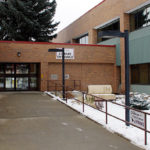Home »

It may be time to start looking for higher ground
Op-Ed Commentary
They say history never repeats itself, and after the long winter and cold spring we’ve had this year, we better hope it’s true because otherwise we could be facing an ominous possibility.
I’m talking about the Great Flood of 1894, now an almost forgotten chapter of B.C. history, but a calamity nevertheless that ravaged the entire Pacific Northwest more than a century ago and one that we could be on the brink of again in the next few weeks.
Even though this calamitous event is no longer in living memory you can read about it in the dusty annals of B.C. history and I’ve done just that and I’d like to share the results with you.
The document is called “Flooding and Landslide Events Southern British Columbia 1808 – 2006” by D. Septer and is an official BC Ministry of Environment document. On page 21, it says the following: “During the winter of 1893-94 record snowfalls were recorded in many of B.C.’s Interior mountains. The spring of 1894 was cold and wet. (Sound familiar?) Of the first 15 days in May, 10 were wet. In the remaining fortnight, there were 11 fine warm days . . .” And after a few rainy days, these were followed by even hotter days that extended into early June. And the result? “The greatest flood known to the early white man,” but not unknown to the aboriginal people of B.C. who lived in the province for hundreds of generations before. I now paraphrase the document.
“Almost all bridges were swept away near Chilliwack . . . Col. James Baker (that’s our Col. Baker, who was Provincial Secretary at the time) reported on the evening of June 4 he was able to pull in a boat up to the Queen’s Hotel (in Chilliwack) . . . a series of washouts on the CPR line west of the Rocky Mountains severed train connections with Eastern Canada for 41 days . . . in the Fort Steele District, four bridges were carried away . . . on account of the high water, about 150 Native Indians at the Saint Eugene Mission were unable to mine.”
And there’s more: “Kootenay Lake rose to unprecedented heights . . . the Kootenay River flooded all the bottomlands turning the country in (sic) one vast lake. A steamer could sail from the head of Kootenay Lake to 10 mi (16 km) south of the (American) boundary, a distance of 60 mi.”
The flood of 1894 also caused havoc around the province and the Lower Mainland. “Floods on the Columbia River were interrupting rail traffic at Golden . . . at Matsqui the water was up to the top of the telegraph poles . . . On May 31 in Vancouver, the Fraser River, with large amounts of debris, backed up into Burrard Inlet . . . mail from Vancouver and Victoria for eastern points were (sic) forwarded via San Francisco . . . all bridges on the Kettle River were lost” . . . And there was loss of life: “Workmen found a small raft floating on the Fraser River at Ruby Creek carrying the dead bodies of an entire family of five . . .”
Without trying to be unduly alarmist, what this shows is that floods are a fact of life in B.C. and no era is immune. Big rivers like the Fraser, Kootenay and Columbia have moderate floods every 20 to 30 years, major floods like the flood of 1948 every 50 years and catastrophic floods about once every 200 years. Back in 1894, B.C. was barely a province and the flood damage, though severe, would pale in comparison to the catastrophe it would cause today.
Consequently, the next six weeks are going to be critical. Look at the mountains. Above six thousand feet (1,828 metres) the snowpack has barely started to move. There was fresh snow at that level today (April 29) and the highway passes are still getting snow. The BC River Forecast Centre will issue its April snowpack report early in May and that report will be critical. If it shows the snowpack level high or extreme, we’re facing the possibility of a massive province-wide flood that can only be prevented by alternating periods of warn and cool weather that will let the snowpack melt gradually.
But if we get a prolonged heat wave in the next six weeks call me Noah and I will be looking for high ground.
Lead image: Wasa Lake flood of June 2012. Ian Cobb/e-KNOW file photo
– Gerry Warner is a retired journalist and sometimes historian with a special interest in rivers and streams.








